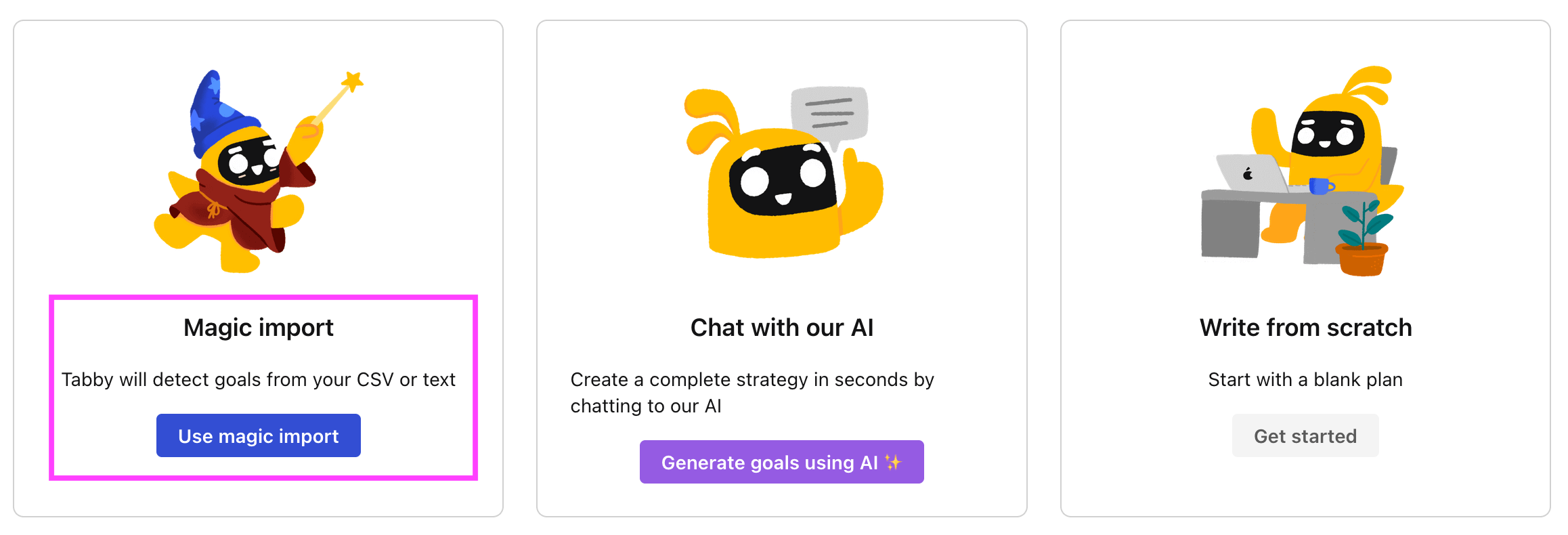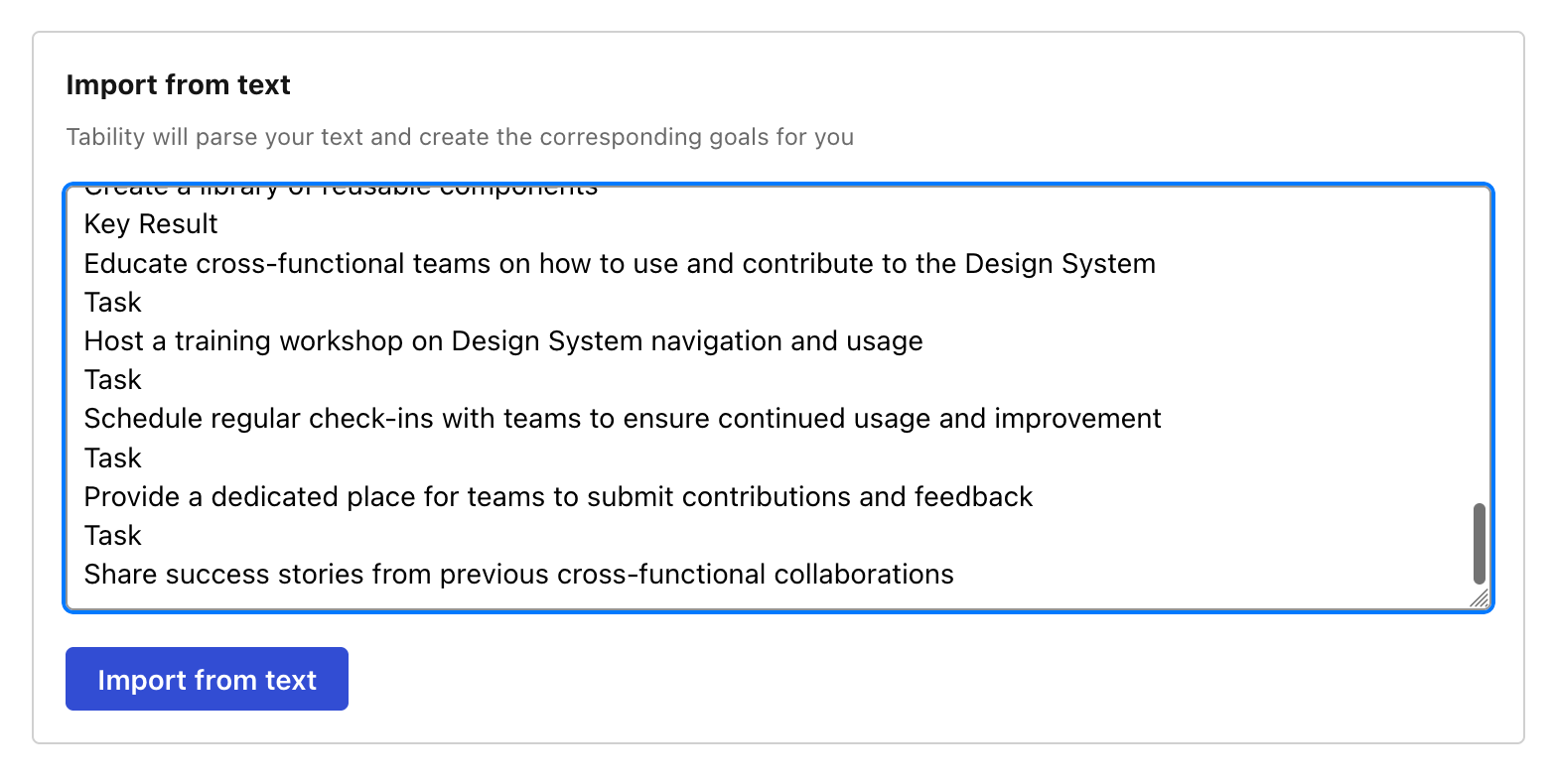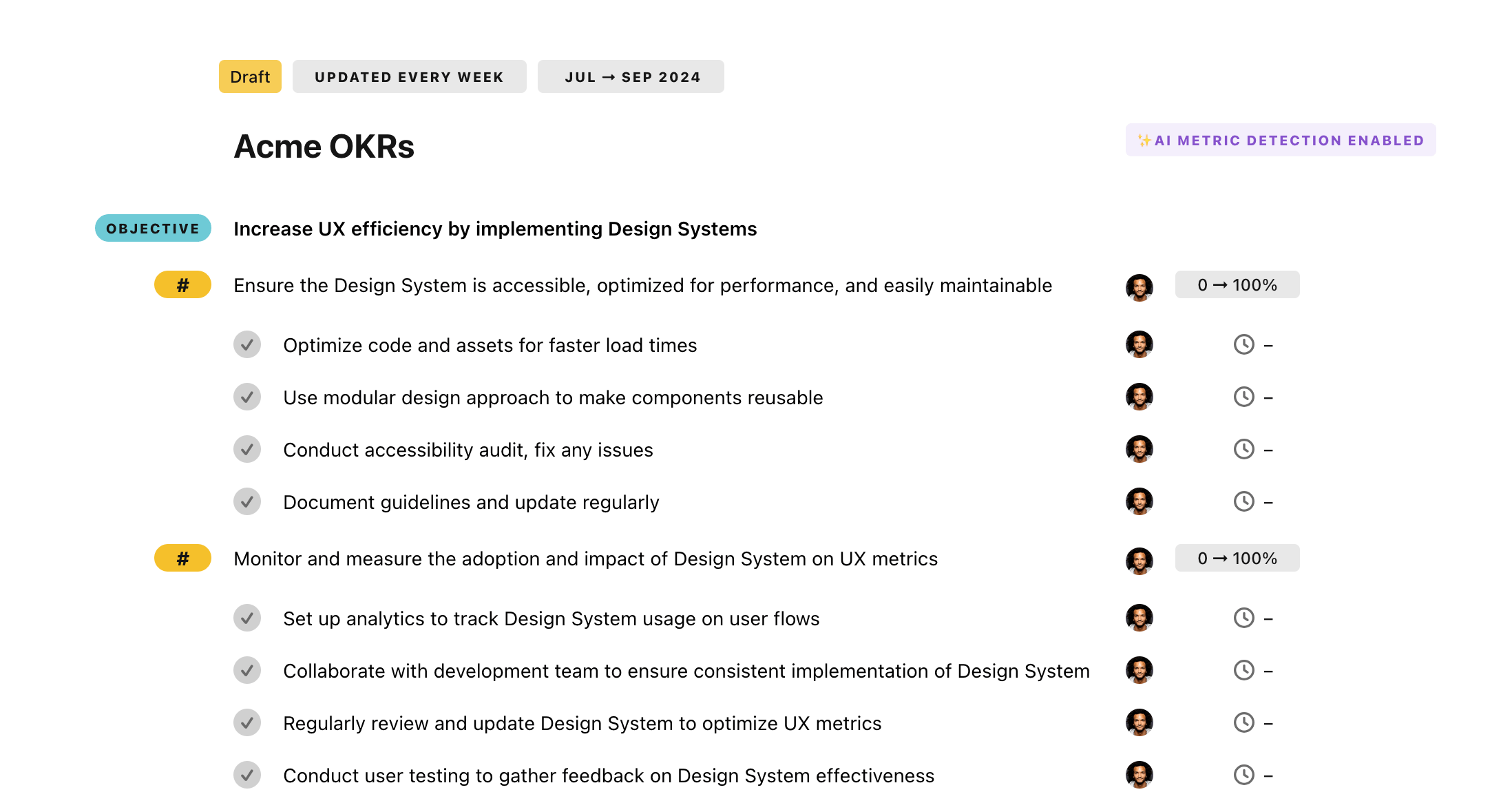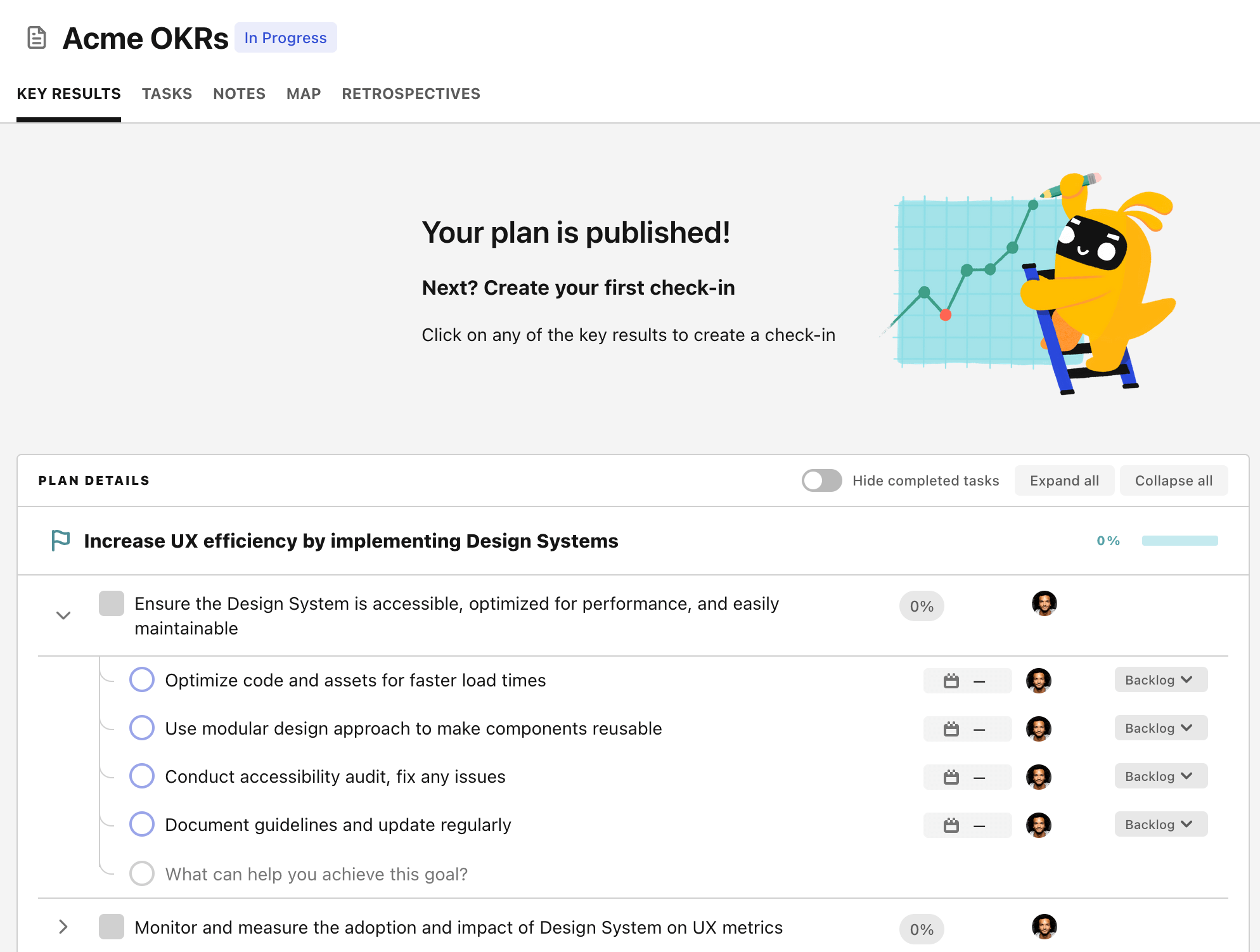OKR template to develop an engaging and interactive gaming app
Your OKR template
The second key Outcome is to construct a strong game architecture within a shorter timeline of 4 weeks, while also conforming to industry standards. This Outcome requires the creation of design prototypes, determining structural requirements of the game, and utilizing standard industry protocols.
The final Outcome focuses on the post-launch phase of the app, aiming to achieve significant downloads (1000 downloads targeted) within two weeks of launch. The goal is also to receive positive user feedback. Partnerships with influencers, targeted online advertising, and using user feedback to make constant improvements are some means to achieve this objective.
Overall, the OKR emphasizes both the construction and the successful launch of the interactive game app - one that is designed well, user-friendly and engages its users effectively.
ObjectiveDevelop an engaging and interactive gaming app
KRComplete coding and debugging providing a smooth user experience by 8 weeks
Develop code for user interface and backend operations
Optimize code for smooth user experience
Test and debug code for any errors or glitches
KRDesign robust game architecture within 4 weeks adhering to industry standards
Sketch out design prototypes
Establish game's structural requirements
Implement industry-standard protocols
KRAchieve 1000 downloads within two weeks of game launch with positive user feedback
Foster partnerships with relevant influencers for promotions
Initiate targeted online advertising to reach potential users
Incorporate user feedback for continuous game improvements
How to edit and track OKRs with Tability
You'll probably want to edit the examples in this post, and Tability is the perfect tool for it.
Tability is an AI-powered platform that helps teams set better goals, monitor execution, and get help to achieve their objectives faster.
With Tability you can:
- Use AI to draft a complete set of OKRs in seconds
- Connect your OKRs and team goals to your project
- Automate reporting with integrations and built-in dashboard
Instead of having to copy the content of the OKR examples in a doc or spreadsheet, you can use Tability’s magic importer to start using any of the examples in this page.
The import process can be done in seconds, allowing you to edit OKRs directly in a platform that knows how to manage and track goals.
Step 1. Sign up for a free Tability account
Go tohttps://tability.app/signup and create your account (it's free!)
Step 2. Create a plan
Follow the steps after your onboarding to create your first plan, you should get to a page that looks like the picture below.

Step 3. Use the magic importer
Click on Use magic import to open up the Magic Import modal.
Now, go back to the OKR examples, and click on Copy on the example that you’d like to use.

Paste the content in the text import section. Don’t worry about the formatting, Tability’s AI will be able to parse it!

Now, just click on Import from text and let the magic happen.

Once your example is in the plan editor, you will be able to:
- Edit the objectives, key results, and tasks
- Click on the target 0 → 100% to set better target
- Use the tips and the AI to refine your goals
Step 4. Publish your plan
Once you’re done editing, you can publish your plan to switch to the goal-tracking mode.

From there you will have access to all the features that will help you and your team save hours with OKR reporting.
- 10+ built-in dashboards to visualise progress on your goals
- Weekly reminders, data connectors, and smart notifications
- 9 views to map OKRs to strategic projects
- Strategy map to align teams at scale